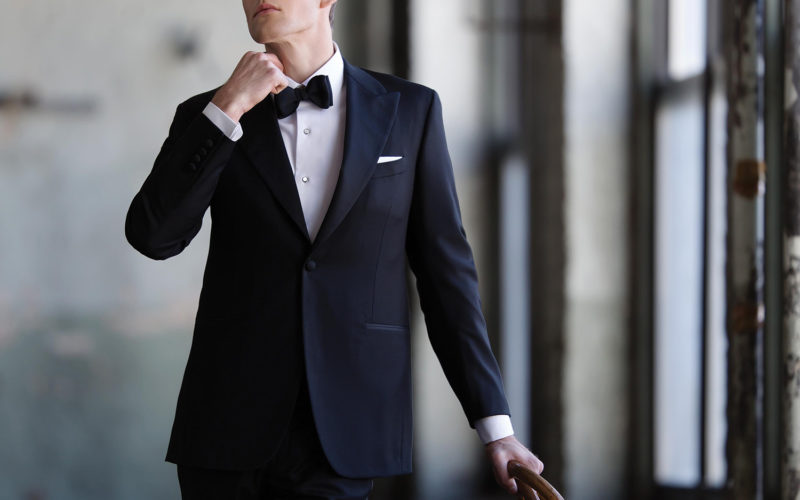Q. Over the initial excitement of our engagement, my fiancé and I are beginning our planning. We are trying to think of all the elements before deciding on location (perhaps a destination wedding) and even the time of year. One unusual concern we have is the groomsmen’s dressing. A few of our friends are fairly preppy but the rest never wear anything beyond shorts and short-sleeve shirts . . . even to church. I do expect them to adjust somewhat, but what are reasonable expectations and requirements?
A. First of all, of course, congratulations! It is both thoughtful and very smart of you to be thinking about these questions. In the array of considerations this probably should not be a worry, but the idea of a destination wedding should be a consideration (especially, whether it would be a financial burden for some of the attendees), and you certainly want lifelong photos of the event to be without distracting or embarrassing clothing.
Even beyond the photographs, the couple should always be the focus of the wedding and everything else should enhance and not distract. Primarily, the groomsmen’s outfits should match the formality of the wedding. They should also be in keeping with the location, the time of year, and the generally-accepted rules of proper men’s attire. I agree that if these are true friends (and caring family), they should make adjustments for the occasion.
The actual location should influence what the guys are wearing. For example, an outdoor wedding or a beach wedding certainly seems to call for including something that’s rather informal as part of the combination. A navy blazer could match up very nicely with white trousers – ranging anywhere from white lightweight wool dress trousers to well-tailored white cotton jeans. The rest of the mixture could be dressier, more in keeping with usual wedding attire, but not totally out of the question with white jeans. Anything from the elegance of a fine white dress shirt (perhaps with French cuffs) to a preppy button-down collar shirt in a pastel color, such as blue, pink, yellow, or lilac. These could be paired with color-coordinated neckties in a cotton madras plaid or a dressier silk print. If you are not set on the formality of ties, options such as a Hawaiian or other such casual styles could be your choice.
Returning to the more traditional weddings and a less hot and humid setting, groomsmen are usually expected to be quite dressed up. You should not assume their daily dressing styles (even that in a house of worship) indicate that they would never dress up. And even if that is their past behavior, while you cannot change their personalities, you could be their beginning steps in preparation for a life of occasional more formal settings.
The variety of a traditionally dressed groomsman’s attire is quite broad:
- A dressy dark wool suit, with a white or colored shirt, and a good-looking colorful long necktie that goes well with the wedding’s color scheme works well.
- Perhaps a strict adherence to black-tie attire in a classic tuxedo or a not-too-way-out variation on it would be a classy consideration. These might include a traditional black or midnight blue single-breasted tuxedo, matching vest, white formal dress shirt, black bow tie, and black plain-toe patent leather formal shoes.
- You might opt for a less strict combination of formal wear with, say, a silvery-blue long silk necktie instead of a black bow tie.
- While it is certainly not my preference, many young people these days choose the current look of groomsmen dressed alike and festively without wearing jackets. Here the emphasis would be on other elements, such as handsome ties and/or braces (suspenders).
There are definitely some elements you will want to avoid. Overly-fussy looks such as wearing too many accessories together — perhaps thinking that watch chains and top hats are a fun idea — is not a good approach. Likewise a fake flower boutonniere instead of a real fresh flower in one’s lapel is a bad choice. Looking as if they were dressed out of a kit with exactly matching necktie and pocket square; instead of choosing ones that are smartly coordinated. Too-bright suits with contrasting lapels are too reminiscent of high-school prom dressing, and can detract from the elegance of your wedding.
Above all, I cannot emphasize enough the importance of ensuring that the wedding is what you want and not an adjustment for anything else (other than budget). Realistically, who should need to adjust for your big day? The two of you (the stars), your family (the supporting actors), or those extras in your cast?
So decide what you want, and if you have further questions, then, come back to me for further advice!
Please send your men’s dress and grooming questions and comments to MALE CALL: Lois.Fenton@prodigy.net









